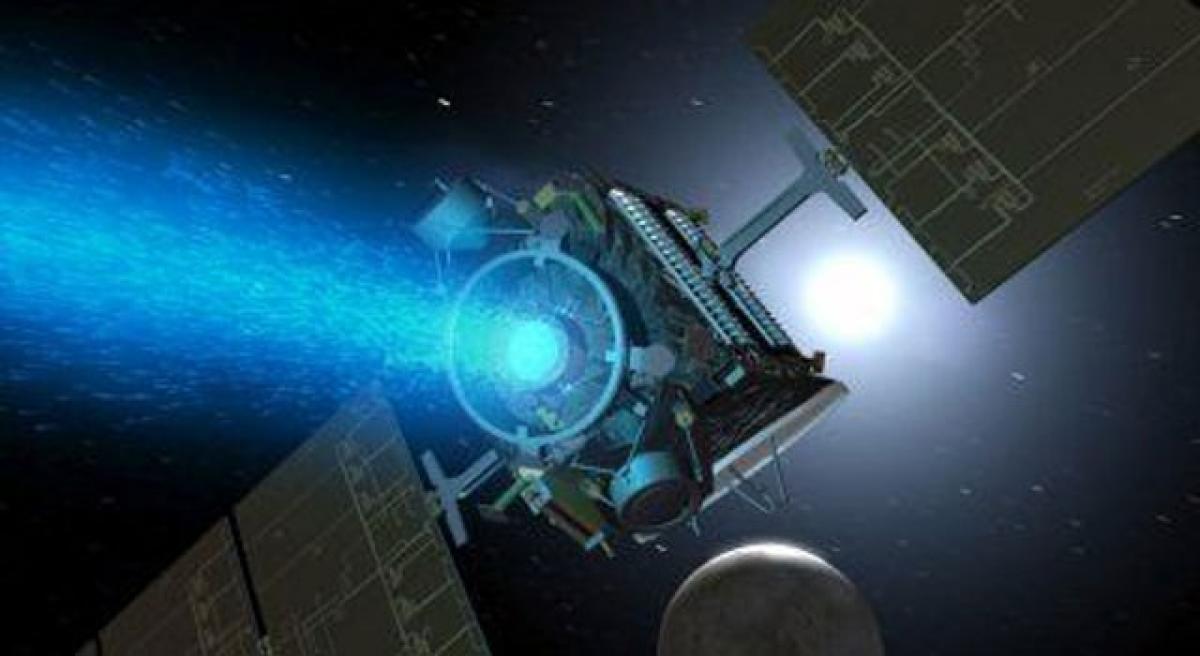Live
- AIMIM works for its own welfare, neglects Old City denizens
- Palle Sindhura Reddy flays YS Jagan during election campaign in Puttaparthi
- Senior JSP leader Manukranth Reddy quits party, joins YSRCP
- Asad files nomination papers for Hyd’bad Lok Sabha seat
- GHMC implements weekly ‘basti’ action plan
- NDA will sweep polls in State, says Balayya
- Hyderabad: Mother kills self over threats to son
- Hyderabad: Mishap on ORR claims two lives
- Anjuman Agiary bags INTACH Heritage Award
- Health dept issues heat advisory for citizens
Just In

Nearly 55-60 per cent of a satellite\'s weight consists of its chemical fuel. Now ISRO is planning to shift to electric propulsion of satellites which would reduce their weight. Chemical rocket engines, like those on the space shuttle, work by burning two gases to create heat, which causes the gases to expand and exit the engine through a nozzle. In so doing they create the thrust that lifts the s
Nearly 55-60 per cent of a satellite's weight consists of its chemical fuel. Now ISRO is planning to shift to electric propulsion of satellites which would reduce their weight. Chemical rocket engines, like those on the space shuttle, work by burning two gases to create heat, which causes the gases to expand and exit the engine through a nozzle. In so doing they create the thrust that lifts the shuttle into orbit.
Smaller chemical engines are used to change orbits or to keep satellites in a particular orbit…Electric rocket engines use less fuel than chemical engines and therefore hold the potential for accomplishing missions that are impossible for chemical systems. To understand how, we have to understand a number called specific impulse.
Take one pound of the hydrogen/oxygen propellants used by the shuttle's main engines and burn it in one second and you'd generate 370 pounds of thrust. That "370" is a measure for the combined efficiency of the engines and the propellants burned in them. If we could discover a different chemical combination that produced twice as much thrust for the same amount of fuel, it would have a specific impulse of 740.
The units of specific impulse are "seconds." The advantage of having a higher specific impulse engine is that you need considerably less fuel to accomplish the mission...Reducing the weight of the fuel by increasing the specific impulse is one of the most powerful ways of reducing the overall weight of a spaceship. The problem is that all the energy for chemical engines comes from the energy stored in the propellants.
There is a limit to this and we've already pretty much reached it with the shuttle engines. The way around this problem is simple: we cheat. Instead of relying only on the energy stored in the propellants, we can add energy using electricity. In the simplest concept an electric heater is used to increase the temperature of the propellant above what it could get through combustion. The higher the temperature the greater the expansion and the more thrust per pound of propellant is obtained, writes http://www.waynesthisandthat.com.

© 2024 Hyderabad Media House Limited/The Hans India. All rights reserved. Powered by hocalwire.com







